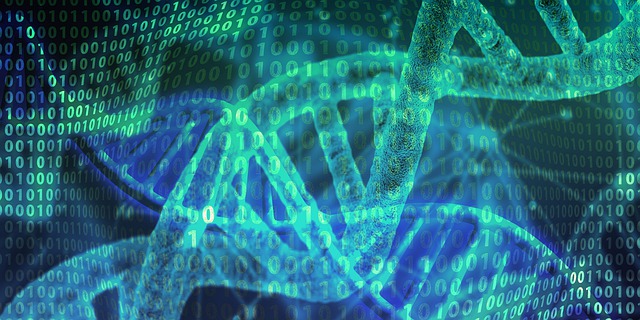Successful storage of digital information in the DNA of a living organism
 Hard drives and other data storage systems store huge amounts of information today. However, like magnetic tapes or floppy disks in the past, these devices can become out of date over time and we will lose access to the data we collect on them. That is why scientists have developed a method to convert data into the DNA to record a living organism. This kind of "mass storage"will probably not become obsolete in the foreseeable future.
Hard drives and other data storage systems store huge amounts of information today. However, like magnetic tapes or floppy disks in the past, these devices can become out of date over time and we will lose access to the data we collect on them. That is why scientists have developed a method to convert data into the DNA to record a living organism. This kind of "mass storage"will probably not become obsolete in the foreseeable future.
Seth Shipman of the University of California at San Francisco, who was not involved in the work, praised the performance of his colleagues from Columbia University, but points out that it will be a long time before such systems find practical application.
Image source: Pixabay
Further details can be found in Naturesystem. (https://www.nature.com/articles/s41589-020-00711-4)
Scientists have been talking about data storage in DNA since yesterday. Deoxyribonucleic acid is a very attractive medium. It enables data to be packed more than 1000 times more densely than in the most powerful hard drives, which means that you could store 10 movies in a space the size of a grain of salt. Since DNA is also a central element of biological systems, it is to be expected that the technologies for writing and reading data will become cheaper and more perfect over time.
So far, scientists have used a sequence of ones and zeros in combinations of to write data into DNA DNA base pairs then the data is encoded into the DNA. However, since the accuracy of DNA synthesis decreases with length, DNA with a length of 200-300 base pairs is synthesized. Each of these fragments is given a unique identifier so that it is known where certain data is located. This is a very expensive method. It costs up to $ 3.500 to store 1 megabit of information, and the DNA vials can degrade over time.
That's why scientists try to record data in the DNA of living organisms that pass information between generations. In 2017, Harris Wang's team at Columbia University took advantage of the CRISPR technologyto detect biological signals such as the presence of fructose. When the researchers added fructose to E. coli cells, gene expression in extrachromosomal levels increased DNA molecules, so-called plasmids.
Then components that defend the bacterium against viruses cut up the plasmid with too much gene expression, and part of it went into a certain part of the bacterial DNAthat remembers viral attacks. This additional piece represented a digital "1". If the fructose signal was not present, we were dealing with a digital "0".
Since only a few data bits could be saved in this way, Wang and his colleagues now replaced the fructose-based system with an electrical one. They modified the E. coli bacterium in such a way that the expression of plasmids increased in response to an applied electrical voltage. In this way they could electrically encode up to 72 bits of data in the bacterial DNA and the message "Hello world!" write. The scientists also showed that they could add E. coli to a standard mixture of soil microorganisms and then sequence the whole thing to read the encoded message.
Wang emphasizes that this is just the beginning of the research. We do not intend to compete with current data storage systems. Scientists have a lot of work to do. For example, they need to find a way to protect the information from degradation caused by mutations in the bacteria during cell division.